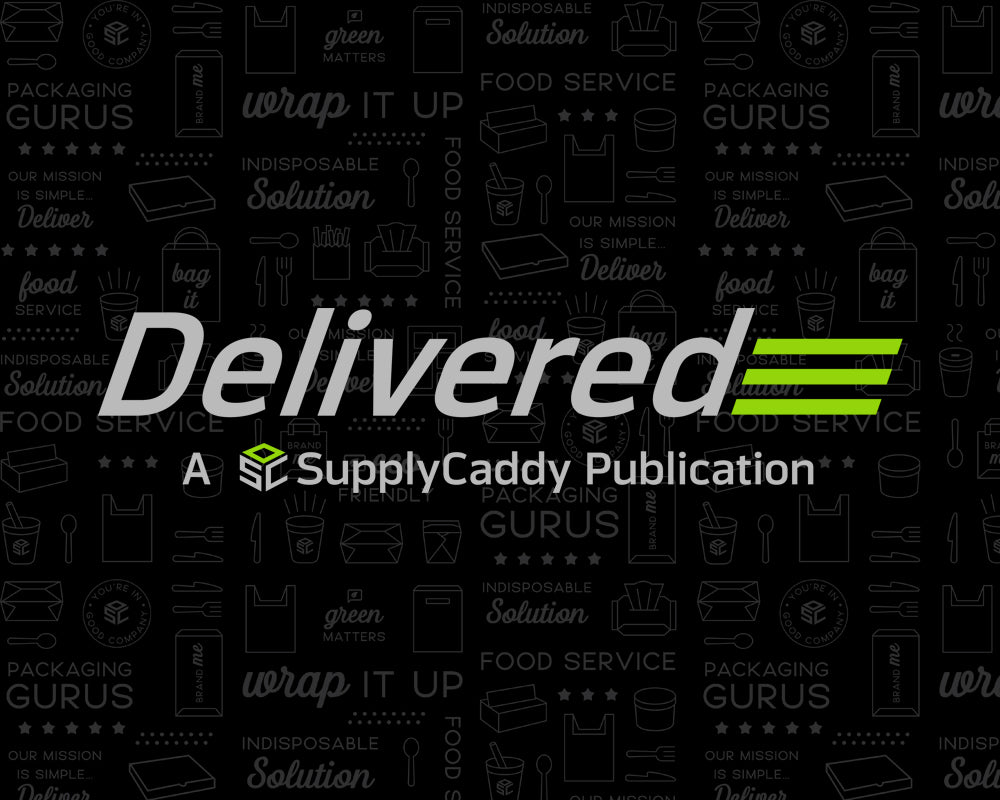Takeout is a big part of food service today. It’s not just something extra. It brings in real income. Whether you run a quick food spot or a high-end restaurant that offers delivery, the take out containers you use matter a lot.
Have you ever opened fries that were cold and soggy? Or had soup spilled through the bag? Your customers have too, and they remember it. A bad takeout experience can ruin a meal and turn people away from coming back.
This is why picking the right takeout container is so important. It’s not just about holding food. It’s about keeping the food hot, crispy, or fresh, just the way it was meant to be. It helps protect your brand, make a good impression, and keep your customers happy. Moisture-resistant and vented containers work differently, and choosing the wrong one can hurt the quality of your food.
At SupplyCaddy, we’ve been helping restaurants of all sizes choose the right take out containers for their food. We understand how important it is for meals to arrive in great condition. Whether it's fries, soup, salads, or full meals, we help you find the perfect fit so your food stays fresh and your customers stay loyal.
In this blog post, we will explore the best option for your menu: moisture-resistant or vented take out containers.
What Are Moisture-Resistant Take Out Containers?
Moisture-resistant take out containers are designed to keep liquids, oils, and sauces inside, right where they belong. These containers are built with a coating or lining that resists breakdown when in contact with wet or greasy foods. Many are made from paperboard with a polyethylene or plant-based PLA lining, or even durable plastic options with leak-resistant lids.
Their primary role is to ensure food integrity during transportation. Think of curries, pasta, ramen, or anything saucy. Without a moisture-resistant container, these dishes could leak, get cold quickly, or even cause the container to collapse during delivery. Moisture-resistant containers don’t just keep food in. They also keep external moisture out, helping dishes arrive the way they were meant to be, warm, full of flavor, and intact.
What Are Vented Take Out Containers?
Vented take out containers feature small openings or built-in ventilation systems that allow steam to escape. This design is handy for foods that need airflow to maintain their texture, such as fried or baked items. Steam can be a food's worst enemy when trapped inside a sealed container; it turns crispy coatings soggy and ruins delicate textures.
These containers are typically made from durable plastics, such as polypropylene, or eco-friendly molded fiber, with strategically placed vents. They’re great for fries, fried chicken, grilled sandwiches, or roasted vegetables, anything that needs to stay dry and crisp during transit. Vented containers strike a balance between maintaining temperature and controlling moisture buildup. In short, they let food breathe.
Pros of Vented Take Out Containers
-
Keeps Fried Foods Crispy
If your menu includes fried foods, you know they start to lose their crunch within minutes of being boxed up. That’s because hot food creates steam, and without ventilation, the steam condenses and turns crisp into soggy. Vented containers solve this problem by releasing that steam gradually. This helps fries stay crunchy, wings keep their texture, and tempura arrives as intended, not like it’s been microwaved.
-
Improves Presentation Upon Delivery
No one wants to open a container and find their food has collapsed into a steaming mess. Vented packaging helps maintain shape, texture, and overall presentation, which matters more than ever in the era of Instagram and online reviews. Even if the delivery takes a short time, the difference in appearance between vented and non-vented packaging is noticeable. Food looks fresher, more appetizing, and less like leftovers.
-
Ideal for Hot, Dry Dishes
Grilled meats, roasted veggies, and paninis, these foods thrive in dry heat. Trapping them in moisture only hurts their texture and appeal. Vented containers enable you to send out hot, dry dishes that arrive just as delicious as they were straight from the line. Plus, dry dishes don’t need to be swimming in their condensation. That’s not just unappealing, it can completely alter flavor.
-
Prevents Overcooking from Steam
Excess steam doesn’t just make food soggy. It can also continue to cook the dish during transit. With vented containers, you reduce the risk of proteins or pasta becoming overcooked and rubbery. By releasing heat gradually, these containers help preserve doneness and taste, so your customer gets the food the way you intended.
-
Better for Short Delivery Windows
Vented containers are ideal for local deliveries or takeout orders that can be picked up within 30 minutes. They maintain a pleasant eating temperature while prioritizing texture and presentation. For restaurants in high-density urban areas or on campuses with short delivery routes, vented packaging keeps food looking and tasting fresh without the need for added insulation from moisture-resistant liners.
Pros of Moisture-Resistant Take Out Containers
-
Prevents Leaks and Spills
Few things ruin the customer experience faster than a leaky container. Whether it’s curry, chowder, or a BBQ sandwich, moisture-resistant containers help keep sauces inside and bags clean. This is crucial for delivery platforms like Uber Eats or DoorDash, where you don’t have eyes on the handoff. Customers shouldn’t have to clean up their takeout before they can enjoy it. Leak-proof packaging protects their order and your reputation.
-
Retains Heat and Moisture
Not all foods benefit from ventilation. For example, dishes like rice bowls, braised meats, or soups are better when they retain steam. Moisture-resistant containers trap heat and humidity, keeping food warm and tender for extended periods. This makes them ideal for dishes that are meant to stay moist, not dry out. If you’re delivering pho, risotto, or baked pasta, these containers are your go-to.
-
Enhances Safety for Wet Dishes
Beyond preventing messes, moisture-resistant packaging helps with food safety. It ensures there’s no contamination from outside elements and reduces the chance of bacteria forming due to temperature fluctuations. Food containers that resist moisture are less likely to break down or collapse, especially with heavier dishes, making the entire delivery safer for your customers.
-
Great for Long-Distance Deliveries
If your food has to travel more than 30 minutes, moisture-resistant packaging offers better temperature retention. This keeps meals warmer for longer and prevents moisture loss that could dry out food or cause shrinkage. Restaurants that deliver to offices, hospitals, or events often find that moisture-resistant containers give them more confidence that food will arrive intact and enjoyable.
-
Reduces Food Waste from Container Breakdown
When packaging fails, food goes to waste. Whether it's a sauce that leaked everywhere or a soggy box that gave out in transit, poorly packaged food often ends up in the trash. Moisture-resistant containers are durable and reliable, thereby reducing the likelihood of food loss due to container-related issues. Fewer remakes and refunds mean better margins and more satisfied customers.
So, Which Take Out Food Container Is Right for Your Business?
The right container depends on what kind of food you serve and how far it needs to go. If your menu has crispy fried food or grilled sandwiches, vented containers are a good choice. These containers let air flow, so the food stays crispy and doesn’t get soggy, even after 15 to 30 minutes on the road.
If your food is saucy, juicy, or includes soups, then moisture-resistant containers are a better option. They help keep the heat in, prevent leaks, and make sure the food still tastes and looks good when it arrives. Some restaurants even use both vented containers for fries and moisture-resistant ones for the main dish. This mix keeps everything fresh and shows that you care about the quality of every order.
The main goal is to protect the food just like it was made with care. When you choose the right packaging for your food, you’ll have fewer complaints, better reviews, more repeat customers, and even fewer wasted orders. That means less stress and fewer extra expenses for your business.
Ready to Upgrade Your Take Out Packaging? Contact SupplyCaddy Today for Custom Food Packaging
At SupplyCaddy, we work directly with restaurants, chains, and food service brands to provide custom food packaging that works in the real world. From vented containers to moisture-resistant solutions, we help you select the ideal materials, shapes, and features for your specific needs, without compromising on quality or budget.
We manufacture in the USA, Turkey, and South America to help you avoid international supply chain disruptions and rising tariffs. Our team understands the demands of modern takeout and delivery, and we’re ready to help you enhance performance, reduce waste, and impress your customers. Contact us at hello@supplycaddy.com.


